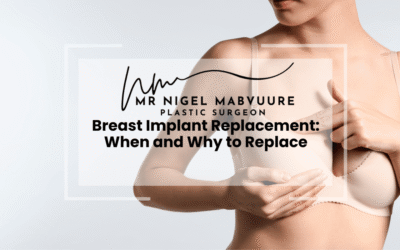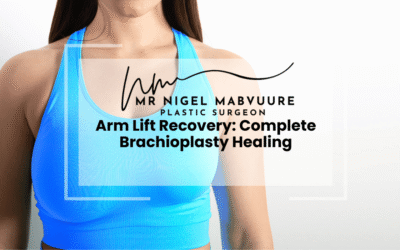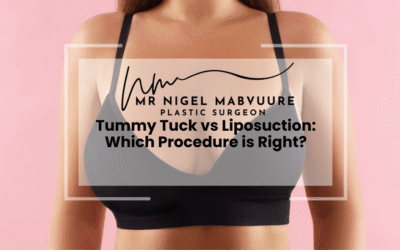Key Takeaways
- The ideal timing for cosmetic procedures depends on individual factors including genetics, lifestyle, and specific concerns rather than chronological age alone.
- Twenties are optimal for preventative treatments and minor enhancements like Botox, professional skincare, and targeted refinements.
- Thirties introduce strategic interventions for early signs of aging, including dermal fillers, energy-based treatments, and post-pregnancy body procedures.
- Forties often require comprehensive rejuvenation addressing structural changes through mini-facelifts, blepharoplasty, and combination therapies.
- Fifties and beyond benefit from advanced procedures like deep plane facelifts and body contouring to address significant skin laxity and volume loss.
- There are no strict age limits for plastic surgery, but safety considerations and physical maturity are essential factors in determining candidacy.
- Consulting with Yorkshire specialists helps create a personalised treatment timeline that evolves with your needs throughout different life stages.
Table of Contents
- Understanding the Right Timing for Cosmetic Procedures
- Twenties: Preventative Treatments and Minor Enhancements
- Thirties: Combating Early Signs of Aging with Strategic Interventions
- Forties: Comprehensive Rejuvenation and Structural Improvements
- Fifties and Beyond: Advanced Procedures for Mature Skin
- What Age Should You Start Considering Plastic Surgery?
- Safety Considerations and Age Limits for Surgical Procedures
- Consulting with Yorkshire Specialists: Creating Your Personal Timeline
Understanding the Right Timing for Cosmetic Procedures
Determining the optimal timing for cosmetic procedures requires careful consideration of multiple factors beyond simply chronological age. The concept of age-appropriate plastic surgery centres on understanding how our skin, facial structure, and body change throughout different life stages, and which interventions might be most beneficial at each point.
In Yorkshire, patients increasingly seek personalised guidance on when to begin their aesthetic journey. The ideal timing depends on individual factors including genetics, lifestyle, environmental exposure, and specific concerns. Some patients benefit from early preventative measures, while others may achieve optimal results by waiting until certain ageing patterns have fully developed.
Medical professionals evaluate skin elasticity, collagen levels, bone structure, and fat distribution when recommending procedures. These physiological markers often provide better guidance than age alone. Additionally, emotional readiness and realistic expectations play crucial roles in determining appropriate timing for any cosmetic intervention.
Understanding that aesthetic goals evolve throughout life helps create a strategic approach to procedures—starting with minimally invasive options in younger years and potentially progressing to more comprehensive treatments as ageing advances. This timeline approach ensures natural-looking results that grow with you rather than dramatic, sudden changes.
Twenties: Preventative Treatments and Minor Enhancements
The twenties represent an ideal time for preventative care and addressing specific concerns rather than comprehensive rejuvenation. During this decade, collagen production remains robust, skin elasticity is optimal, and most individuals haven’t yet developed significant signs of ageing. Yorkshire patients in this age group typically focus on enhancement rather than correction.
Non-surgical treatments dominate this age category. Popular options include:
- Botox for prevention: Micro-dosing Botox can prevent dynamic wrinkles from forming, particularly in areas prone to expression lines like the forehead and around the eyes.
- Skincare regimens: Establishing professional-grade skincare routines with retinoids, antioxidants, and sun protection forms the foundation of preventative ageing.
- Minor refinements: Procedures like rhinoplasty or otoplasty (ear correction) are anatomically focused rather than age-related and can be ideal during this period.
- Lip enhancements: Subtle lip fillers for definition and volume represent one of the most requested procedures in this age group.
For body concerns, treatments like liposuction for localised fat deposits or breast augmentation are common. These procedures address congenital or developmental issues rather than age-related changes. The focus remains on enhancement rather than restoration, with an emphasis on natural-looking results.
The twenties also present an excellent opportunity to address acne scarring through treatments like microneedling, chemical peels, or laser resurfacing while the skin maintains optimal healing capabilities.
Thirties: Combating Early Signs of Aging with Strategic Interventions
The thirties mark a transitional period when the first noticeable signs of ageing typically emerge. Yorkshire patients in this decade often observe subtle volume loss in the mid-face, fine lines becoming more pronounced, and skin texture changes. This life stage presents an ideal opportunity for strategic interventions that address these early changes while preserving natural features.
Injectable treatments become increasingly valuable during this period. Dermal fillers can restore volume in the cheeks and temples where subtle hollowing begins to occur. Neurotoxins like Botox remain effective for dynamic wrinkles, now addressing both prevention and treatment of established lines. Many patients benefit from combination approaches that target multiple concerns simultaneously.
Energy-based treatments gain prominence in the thirties treatment protocol. Radiofrequency and ultrasound technologies stimulate collagen production, addressing skin laxity before it becomes significant. These non-surgical options provide meaningful improvement without downtime, making them particularly suitable for busy professionals.
For those experiencing post-pregnancy body changes, this decade often sees interest in procedures that address multiple areas. Breast lifts, tummy tucks, and liposuction can restore pre-pregnancy contours, though many surgeons recommend waiting until family planning is complete.
The thirties represent an ideal balance point—intervening early enough to prevent more significant changes while having established concerns that warrant treatment. This proactive approach often means less extensive procedures will be needed later in life.
Forties: Comprehensive Rejuvenation and Structural Improvements
The forties typically mark a significant transition in aesthetic concerns, with structural changes becoming more prominent alongside surface-level ageing. Yorkshire patients in this age group often notice more pronounced jowling, deepening nasolabial folds, and visible volume loss throughout the face. The skin’s natural regenerative processes slow considerably, making both surgical and advanced non-surgical interventions increasingly appropriate.
Facial procedures that address structural changes gain prominence during this decade. Mini-facelifts and mid-face lifts can reposition descended tissues while maintaining a natural appearance. Blepharoplasty (eyelid surgery) becomes particularly beneficial as upper eyelid hooding and lower eyelid bags develop. These surgical interventions provide long-lasting correction for concerns that non-surgical treatments cannot adequately address.
For non-surgical options, combination therapies yield the most impressive results. Layered approaches might include:
- Deeper placement of fillers to restore structural support
- Skin resurfacing with fractional lasers or deep chemical peels
- Thread lifts for moderate tissue repositioning
- Continued maintenance with neurotoxins and superficial fillers
Body contouring procedures often shift focus from isolated concerns to more comprehensive approaches. Abdominoplasty with muscle repair addresses laxity that exercise cannot correct. Breast lifts, often combined with implants or fat transfer, restore youthful positioning and volume. For many patients, combining procedures provides more harmonious results and a single recovery period.
The forties represent an ideal time for more definitive interventions, as patients are typically established in their careers and family life while still maintaining excellent healing capacity.
Fifties and Beyond: Advanced Procedures for Mature Skin
The fifties and beyond bring distinct aesthetic challenges that require specialised approaches. Yorkshire patients in this age group typically experience significant skin laxity, deep tissue descent, and volume loss throughout the face and body. Hormonal changes further impact skin quality, with decreased elasticity and collagen production creating more complex concerns that benefit from comprehensive solutions.
Full facelift procedures become particularly beneficial during this period, addressing multiple layers of facial ageing simultaneously. Modern techniques focus on deep plane approaches that reposition underlying structures rather than simply tightening skin, creating natural-looking rejuvenation without the stretched appearance associated with older techniques. Complementary procedures like fat grafting restore youthful volume while neck lifts address platysmal banding and submental fullness.
For patients seeking less invasive options, advanced combination therapies can provide meaningful improvement. These might include:
- High-intensity focused ultrasound for deep tissue tightening
- Radiofrequency microneedling for dermal remodelling
- Strategic volume replacement with longer-lasting fillers
- Laser resurfacing for textural improvement and collagen stimulation
Body procedures often address post-menopausal changes, with treatments focusing on areas particularly affected by hormonal shifts. Arm lifts, thigh lifts, and body lifts can address significant skin laxity that develops during this period. Fat transfer techniques become increasingly valuable, redistributing volume from areas of excess to regions of depletion.
The emphasis for patients in this age group shifts toward comprehensive rejuvenation rather than isolated concerns, with treatment plans often phased over time to achieve optimal results while maintaining natural appearance and identity.
What Age Should You Start Considering Plastic Surgery?
The question of when to begin considering plastic surgery has no universal answer, as individual factors significantly influence appropriate timing. Rather than focusing solely on chronological age, Yorkshire specialists evaluate several key considerations to determine readiness for aesthetic interventions.
For preventative treatments, many practitioners recommend beginning in the mid-to-late twenties when the first subtle signs of ageing emerge. Starting neurotoxin treatments before deep wrinkles form can prevent their development, while establishing professional skincare routines early provides cumulative benefits. These minimally invasive approaches carry minimal risk while potentially reducing the need for more extensive procedures later.
For surgical procedures addressing congenital or developmental concerns—such as rhinoplasty, otoplasty, or breast surgery—physical maturity rather than age determines appropriate timing. Most surgeons ensure that:
- Facial growth is complete (typically by age 16-18)
- Breast development has stabilised (usually by late teens)
- The patient demonstrates emotional maturity and realistic expectations
- The decision is self-motivated rather than externally influenced
For age-related concerns, the optimal approach involves addressing changes as they become bothersome rather than adhering to a predetermined schedule. Some patients benefit from early intervention with subtle treatments, while others prefer waiting until changes are more pronounced to achieve more dramatic improvement.
Ultimately, the best time to consider plastic surgery is when specific concerns impact your confidence or quality of life, regardless of age. Consulting with qualified specialists who prioritise natural results and appropriate timing ensures the most beneficial outcome for your individual circumstances.
Safety Considerations and Age Limits for Surgical Procedures
While there is no absolute upper age limit for plastic surgery, safety considerations become increasingly important as patients age. Yorkshire specialists conduct thorough evaluations to determine candidacy based on physiological rather than chronological age. This comprehensive assessment includes cardiovascular health, healing capacity, medication profiles, and overall wellness to ensure procedures can be performed safely.
For younger patients, minimum age requirements exist for various procedures:
- Rhinoplasty: Typically 16-18 years when nasal growth is complete
- Breast augmentation: Generally 18 for saline implants and 22 for silicone in the UK
- Liposuction: Usually 18 years, with consideration for body development
- Non-surgical injectables: Minimum 18 years, though most practitioners prefer patients to be in their mid-twenties
Medical conditions rather than age often determine surgical candidacy. Conditions requiring careful evaluation include:
- Uncontrolled diabetes or hypertension
- Significant cardiovascular disease
- Bleeding disorders or anticoagulant therapy
- Autoimmune conditions affecting healing
- Smoking and substance use that impairs recovery
For older patients, procedures may be modified to accommodate physiological changes. These adaptations might include:
- Shorter operative times to reduce anaesthesia exposure
- Staged procedures rather than extensive combined surgeries
- Modified techniques that account for thinner skin and altered tissue quality
- Enhanced post-operative monitoring and support
The safest approach involves transparent discussion about risk profiles and potential modifications to ensure optimal outcomes regardless of age. Yorkshire specialists prioritise patient safety above all, sometimes recommending alternative treatments when surgical risks outweigh potential benefits.
Consulting with Yorkshire Specialists: Creating Your Personal Timeline
Yorkshire offers access to highly qualified plastic surgery specialists who can help develop personalised treatment timelines based on individual needs rather than generic age recommendations. These bespoke consultations consider your unique facial anatomy, genetic predispositions, lifestyle factors, and aesthetic goals to create a strategic plan that evolves with you throughout different life stages.
During initial consultations, Yorkshire specialists typically:
- Conduct comprehensive facial and body analysis to identify current and potential future concerns
- Discuss family ageing patterns to anticipate hereditary changes
- Review lifestyle factors including sun exposure, smoking, and skincare habits
- Evaluate previous treatments and their effectiveness
- Discuss budget considerations and treatment priorities
This information forms the foundation for developing a phased approach that might begin with preventative measures in earlier years, transitioning to maintenance procedures in middle age, and potentially including more comprehensive interventions later in life. The timeline remains flexible, adapting to how your features change and how your aesthetic goals evolve.
Yorkshire specialists emphasise patient education, ensuring you understand the rationale behind timing recommendations. This collaborative approach empowers you to make informed decisions about when to proceed with various treatments based on both aesthetic and practical considerations.
Regular follow-up evaluations allow for timeline adjustments as needed. Many patients benefit from annual assessments that track changes and refine treatment strategies accordingly. This proactive approach ensures interventions occur at optimal times—neither too early nor after changes have become difficult to address.
By partnering with experienced Yorkshire specialists, you gain access to personalised guidance that considers not just what procedures might benefit you, but when they would be most effective, creating natural-looking results that enhance your appearance throughout every life stage.
Frequently Asked Questions
What is the best age to start preventative Botox?
The ideal age to start preventative Botox is typically in the mid-to-late twenties when expression lines begin to form but haven’t yet become permanent. Starting at this stage can prevent dynamic wrinkles from deepening over time. However, the appropriate timing varies based on individual factors including genetics, sun exposure history, and facial expression patterns. Consulting with a qualified specialist will help determine if you’re at the right stage for preventative treatment.
Are there age limits for cosmetic surgery procedures?
There are minimum age requirements but typically no upper age limits for cosmetic surgery. Minimum ages include 16-18 for rhinoplasty, 18 for saline breast implants (22 for silicone in the UK), and 18 for most body contouring procedures. For older patients, candidacy depends on overall health rather than chronological age. Factors like cardiovascular health, healing capacity, and medication profiles determine suitability for surgery regardless of age.
What cosmetic procedures are most appropriate for patients in their forties?
The most appropriate procedures for patients in their forties include mini-facelifts, blepharoplasty (eyelid surgery), deeper placement of dermal fillers, fractional laser resurfacing, and comprehensive body contouring. This decade often requires addressing both structural changes and surface-level aging. Combination approaches yield optimal results, with surgical interventions providing correction for concerns that non-surgical treatments cannot adequately address.
How do I know if I’m too young for a facelift?
You’re likely too young for a traditional facelift if you have good skin elasticity, minimal jowling, and your concerns can be addressed with less invasive options. Most patients under 40 benefit more from preventative treatments, targeted fillers, or mini-lifts rather than full facelifts. The best determination comes through professional evaluation of your facial anatomy, tissue laxity, and the depth of facial folds rather than age alone.
What non-surgical options should I consider before surgical intervention?
Before pursuing surgery, consider non-surgical options including neurotoxins (Botox) for dynamic wrinkles, dermal fillers for volume loss, energy-based treatments (radiofrequency, ultrasound) for skin tightening, thread lifts for moderate tissue repositioning, and advanced skincare with professional-grade products. These less invasive alternatives can provide significant improvement with minimal downtime and may delay the need for surgical intervention, particularly when started early in the aging process.
How often should I reassess my cosmetic treatment plan as I age?
You should reassess your cosmetic treatment plan annually or whenever you notice significant changes in your appearance. Regular evaluations allow specialists to track changes in your skin quality, facial structure, and overall aging patterns. This proactive approach ensures treatments remain appropriate for your current needs rather than following a predetermined schedule. As you transition through different decades, your treatment strategy should evolve to address new concerns while maintaining natural-looking results.




